If you’re a weightlifter, then you know that using a lifting belt can help you lift more weight. But did you know that there are different types of belts – nylon and leather? Which one is better for you? What pros and cons have both? This article will discuss the benefits and downsides of both types of belts so that you can make an informed decision about which one is best for you.
What Does a Weightlifting Belt Do?
A weightlifting belt does two things: it supports your lower back and it gives you something to push against when you’re lifting. Not only do powerlifters and Olympic lifters use belts – if you’re doing any kind of lifting where your back is at risk, but a belt can also help keep you safe.
Weightlifting belts are actively used in such sports as:
- Crossfit;
- Powerlifting;
- Olympic Lifting;
- Strongman;
Beltless lifting can be used in:
- Bodybuilding;
- Endurance sports;
- Gymnastics;
A weightlifting belt can help you lift more weight, with good form, by providing additional support for your lower back and core. Wearing a belt also cue’s your body to engage your abdominal muscles, which can help you generate more power when lifting.
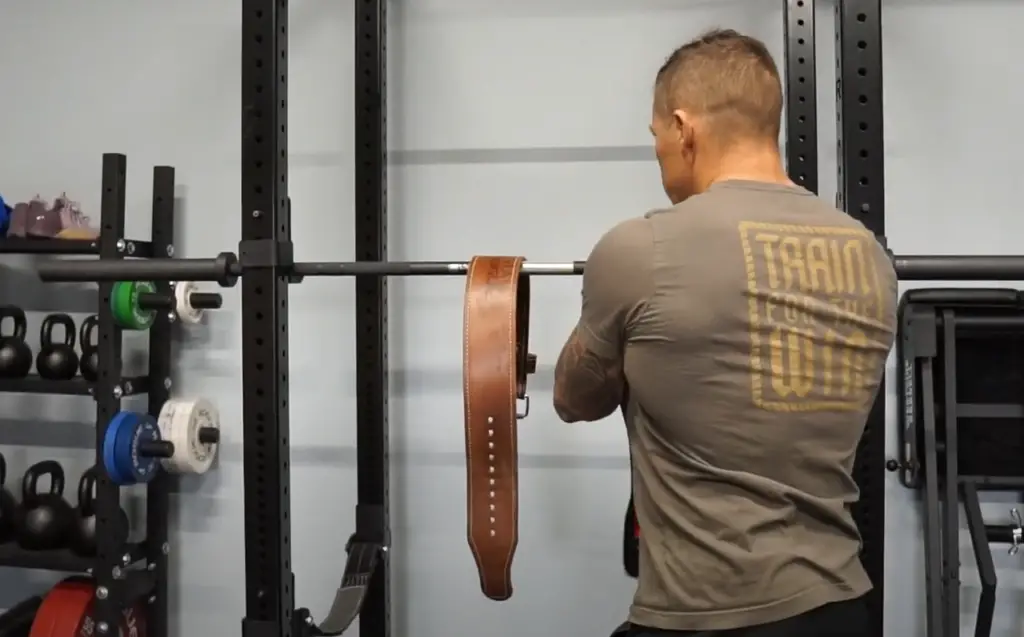
Wearing a weightlifting belt all the time can lead to dependency and weaken the muscles in your lower back and core that need to be strong for safe and effective lifting. In addition, belts can be uncomfortable and restrict your range of motion, which can be a problem if you’re doing other types of exercises such as yoga or mobility work [1].
How to Wear a Weightlifting Belt to Lift More Weight Safely
For most people, the best way to wear a weightlifting belt is to put it on before you start lifting and take it off when you’re done. If you’re doing a lot of heavy lifting in one session, you may want to take a break every few sets to remove the belt and give your body a chance to rest.
To get more benefits of a weightlifting belt, you should follow some tips on how to put on and wear this sports equipment:
- First, position the belt around your waist so that the center of the belt is aligned with your belly button;
- Second, make sure that the width of the belt is about 4 – 6 inches. If the width is too large, it will not be able to give you the support that you need;
- Third, wear the belt before you start lifting and take it off when you’re done. If you’re doing a lot of heavy lifting in one session, you may want to take a break every few sets to remove the belt and give your body a chance to rest;
- Fourth, avoid wearing the belt during exercises that don’t put a lot of strain on your back, such as biceps curls or triceps extensions. Wearing a weightlifting belt during these exercises can do more harm than good by weakening the muscles in your core that are responsible for stabilizing your spine;
- Finally, make sure to clean your weightlifting belt regularly with soap and water to prevent the buildup of sweat and bacteria;
The material the weightlifting belts are made of is also important. There are two common materials which are nylon and leather. And each has its advantages and disadvantages [2].

Features of the lifting belts to consider
Material options
Most lifting belts are usually made of nylon or leather. Nylon lifting belts are cheaper and more comfortable to wear but they offer less support. On the other hand, leather lifting belts are more expensive but they offer better support. Both materials are not easy to wear and tear.
Size and adjustability
The size of the lifting belt is very important. If it’s too big, it will slide up and down your body while you’re working out. If it’s too small, it will be uncomfortable and might pinch your skin. Make sure to try on different sizes before you buy one.
The sizes of lifting belts are:
- Small: 26-29,9 inches;
- Medium: 30-33,8 inches;
- Large: 34-37,8 inches;
Most lifting belts are adjustable so you can find the perfect fit. Some have a velcro closure while others have a buckle closure. If you plan on using the belt for heavy lifting, make sure to get one with a sturdy buckle.
Thickness and support
Design
Design is also an important factor to consider. Some lifting belts have a contoured design that conforms to your body while others have a flat design. The contoured belts are more comfortable to wear but they’re also more expensive. If you’re on a budget, go for a flat belt.
Color
The color of the lifting belt is also something to consider. Some people prefer black because it goes with everything and it doesn’t show dirt as easily. Other people prefer brighter colors because they’re easier to see in the gym.
Cut and sewn vs fused
Lifting belts are usually made of two pieces of material that are sewn together or one piece of material that is fused together. The sewn belts are more comfortable to wear but they’re also more expensive. The fused belts are cheaper but they’re not as comfortable.
Width and length
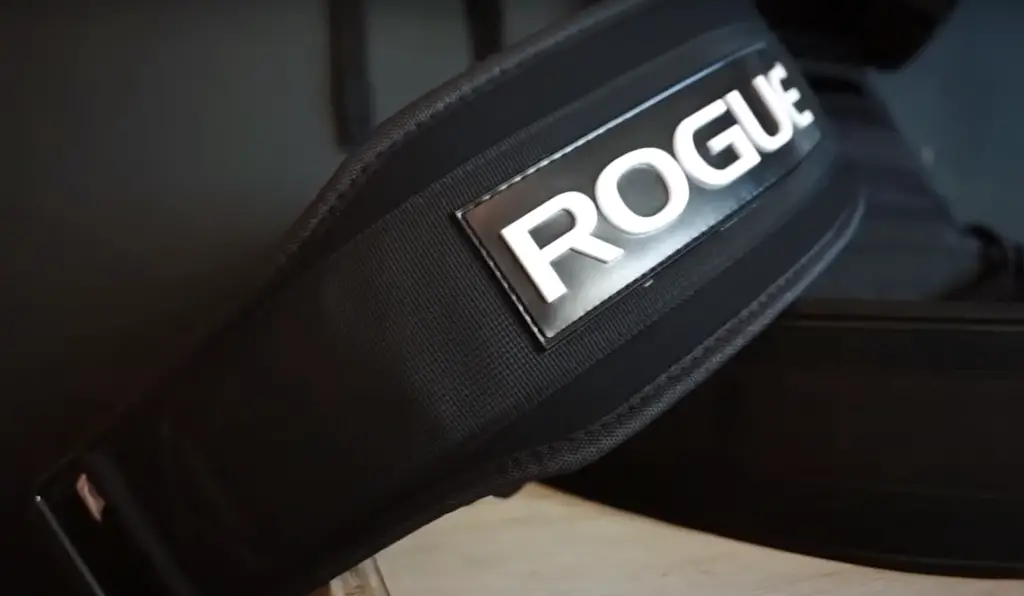
The length of the lifting belt is also something to consider. A longer belt will provide more support but it might be difficult to put on and take off. A shorter belt will be easier to put on and take off but it won’t offer as much support. The average length of a lifting belt is 35,8 inches – 48 inches.
Fastener
The fastener is also an important factor to consider. Some lifting belts have a velcro closure while others have a buckle closure. If you plan on using the belt for heavy lifting, make sure to get one with a sturdy buckle [3].
Price
Of course, price is also an important factor to consider. Lifting belts range in price from 20 dollars to 200 dollars. The more expensive belts are usually made of higher-quality materials and they offer more support. The price level is determined by the quality of manufacture, the design, and the features. For example, a belt with a contoured design and a velcro closure will be more expensive than a belt with a flat design and a buckle closure.
Nylon vs Leather Lifting Belt: What’s the Difference?
The two main types of lifting belts are nylon and leather. Nylon belts are typically cheaper, but leather belts are often seen as more durable and supportive. So, which is the better option for you? Here’s a quick rundown of the key differences between nylon and leather lifting belts:
Nylon Belts:
- Typically cheaper than leather belts;
- Less supportive than leather belts;
- More comfortable to wear for long periods;
- Easier to adjust while wearing;
- Often used by beginner and intermediate weightlifters;
Leather Belts:
- More expensive than nylon belts;
- More supportive than nylon belts;
- Less comfortable to wear for long periods;
- Harder to adjust while wearing;
- Often used by advanced weightlifters;
So, which type of belt is better for you? If you’re just starting, a nylon belt may be a good option. They’re typically cheaper and more comfortable to wear for long periods. However, if you’re an experienced weightlifter, a leather belt may be a better choice. They offer more support and are often seen as more durable [4].
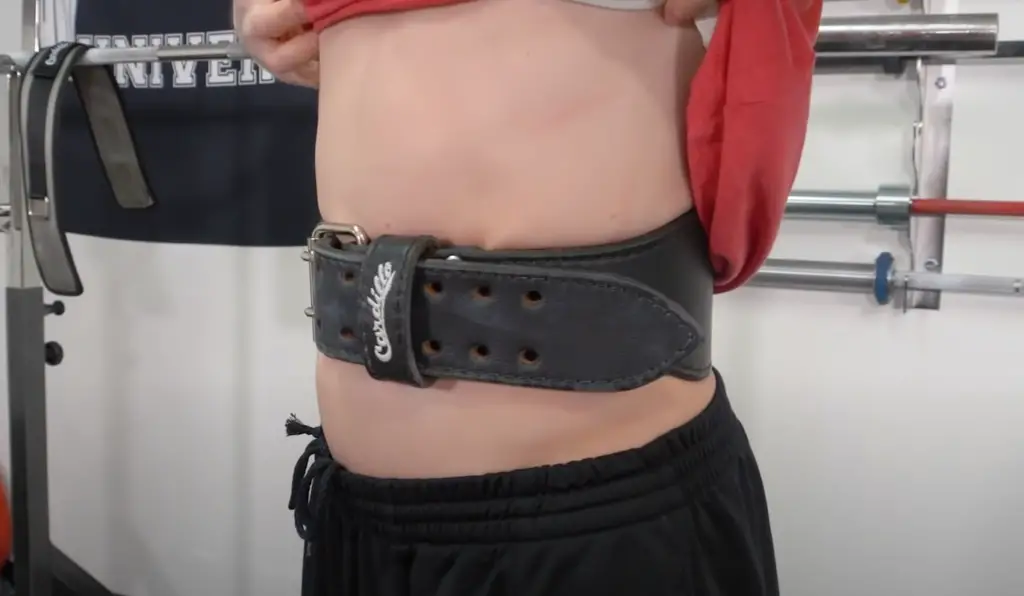
Nylon belt pros and cons
Nylon belts are often cheaper than leather belts, making them a good option for budget-conscious lifters. Nylon is also a synthetic material, so it’s generally more durable and easier to care for than leather. Nylon belts can also be adjusted more easily to get a custom fit, which is important for comfort and safety. However, nylon belts don’t provide as much support as leather belts, so they’re not the best choice for heavy lifting. They can also stretch over time, which means you’ll need to adjust them frequently.
Leather belt pros and cons
Leather belts are more expensive than nylon belts, but they’re also more durable and offer more support. If you’re planning on doing a lot of heavy lifting, a leather belt is a good choice. Leather belts can also be customized to fit your body better, which further improves their support. However, leather belts can be more difficult to care for and adjust than nylon belts. They also tend to be less comfortable in hot weather since they’re made of natural materials.
How to take care of lifting belts?
Sportsmen and amateurs use the lifting belt weekly. Proper care of the lifting belt is crucial to its longevity. The following are tips on how to take care of your lifting belt:
- Wipe the belt clean with a damp cloth after each use;
- Do not put the belt in direct sunlight or in a washing machine;
- Use saddle soap or another leather cleaner every few months to keep the leather soft and pliable;
- Apply a conditioner such as a mink oil after cleaning to help preserve the leather;
Some problems can develop with a lifting belt if it is not taken care of properly. The following are some problems that can occur:
- The leather can dry out and crack;
- The buckle can become loose and fall off;
- The stitching can come undone;
If the belt dries or cracks, it can cause the belt to become brittle and break. This problem is especially common with cheaper belts made of lower-quality leather. If the buckle comes off, it can be lost and difficult to find. In this case, you should buy a new one. Stitching can come undone with the constant use of the belt and cause the belt to fall apart. To avoid these problems, it is important to take care of your lifting belt. Following the tips above will help ensure that your belt lasts for many years [5].
FAQ
What material is best for a weightlifting belt?
The best weightlifting belt is one that is comfortable for you to wear and provides the support you need. There are two main types of belts: nylon and leather. Each has its own advantages and disadvantages.
Leather belts are more expensive than nylon belts, but they last longer. Leather also provides more support than nylon, making it a good choice for heavy lifting. However, leather belts can be uncomfortable to wear, and they may not provide as much support for your lower back as you would like.
How do I choose the right size weightlifting belt?
When choosing a weightlifting belt, it is important to select the right size. The belt should be snug but not too tight. You should be able to breathe normally while wearing the belt. If the belt is too loose, it will not provide adequate support. If the belt is too tight, it may cause pain or discomfort.
How do I put on a weightlifting belt?
To put on a weightlifting belt, first, loosen the belt by unbuckling it. Then, wrap the belt around your waist and thread it through the buckle. Pull the belt until it is tight, but not too tight. You should be able to breathe normally while wearing the belt. Finally, buckle the belt and adjust it as needed.
Should I wear a weightlifting belt all the time?
You should only wear a weightlifting belt when you are lifting weights. Wearing a belt all the time can weaken your abdominal and lower back muscles, which can lead to injury.
Can I wash my weightlifting belt?
Yes, you can wash your weightlifting belt. Leather belts can be cleaned with mild soap and water. Nylon belts can be machine washed on a gentle cycle.
How do I take care of my weightlifting belt?
To take care of your weightlifting belt, regularly clean it with a mild soap and water solution. Leather belts may also need to be conditioned periodically. Avoid storing the belt in direct sunlight or extreme temperatures, as this can damage the material. Weightlifting belts are an important piece of equipment for many lifters. They provide support for your back and help to keep your spine in alignment.
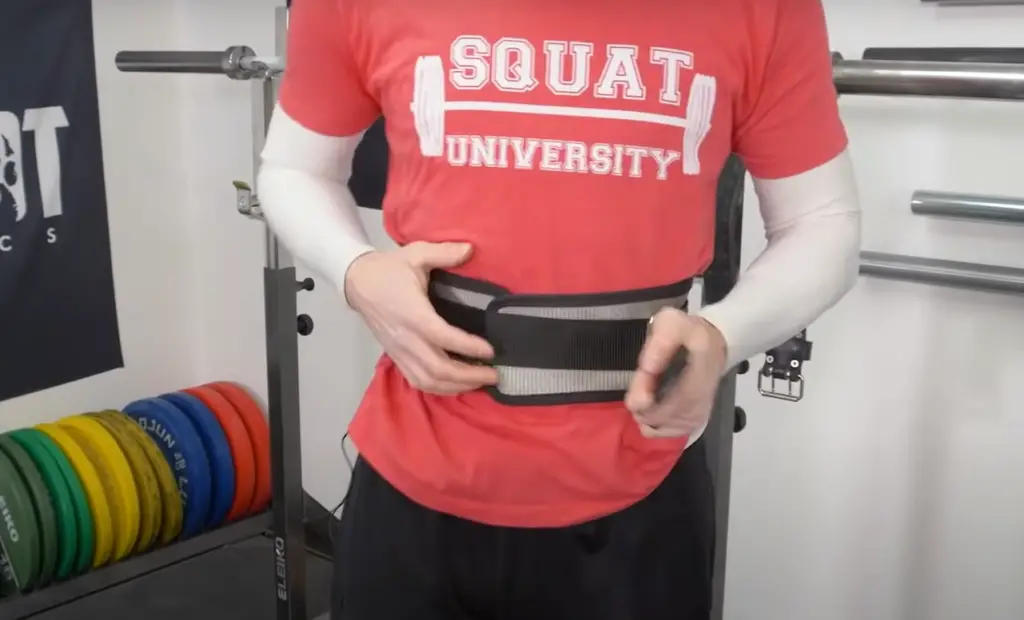
What exercises should you wear a weightlifting belt for?
Wearing a weightlifting belt can help to support your back during exercises such as squats, deadlifts, and overhead presses.
Can I wear a weightlifting belt if I have lower back pain?
If you have lower back pain, you should consult with a doctor or physical therapist before using a weightlifting belt. Wearing a belt may not be recommended if your pain is caused by a herniated disc or other serious condition.
How can I break my belt in?
Nylon belts can be broken in by wearing them during your workouts. Leather belts may also be worn during workouts, but they may require some additional conditioning before they are fully broken in.
What is the best weightlifting belt for CrossFit?
The best weightlifting belt for CrossFit is one that is comfortable for you to wear and provides the support you need. There are many different types of belts available, so you should try a few different ones to find the one that works best for you.
What belts do powerlifters use?
Powerlifters often use leather belts because they provide more support than nylon belts. However, powerlifters may also use nylon belts if they find them to be more comfortable.
What is the best weightlifting belt for bodybuilding?
The best weightlifting belt for bodybuilding is one that is comfortable for you to wear and provides the support you need. There are many different types of belts available, so you should try a few different ones to find the one that works best for you.
Useful Video: Leather vs Nylon Lifting Belts: What Are the Differences?
Conclusion
Lifting belts are an important part of any weightlifter’s kit, and the debate between nylon and leather has been going on for years. So, which is the better option for you? Nylon lifting belts in comparison to leather lifting belts are often more comfortable and provide more support. Nylon is also a cheaper material, making it the more budget-friendly option. Leather, on the other hand, is more durable and will last longer with proper care. It’s also easier to adjust a leather belt than a nylon one. Ultimately, the choice between nylon and leather lifting belts is a personal preference. Consider your needs and budget when making your decision.
References:
- https://www.verywellfit.com/the-proper-use-of-belts-during-weight-training-3119447
- https://barbend.com/how-to-wear-weightlifting-belt/
- https://www.healthline.com/health/weightlifting-belt
- https://barbend.com/leather-vs-nylon-lifting-belts/
- https://musclelead.com/how-to-care-for-your-weight-lifting-belt/

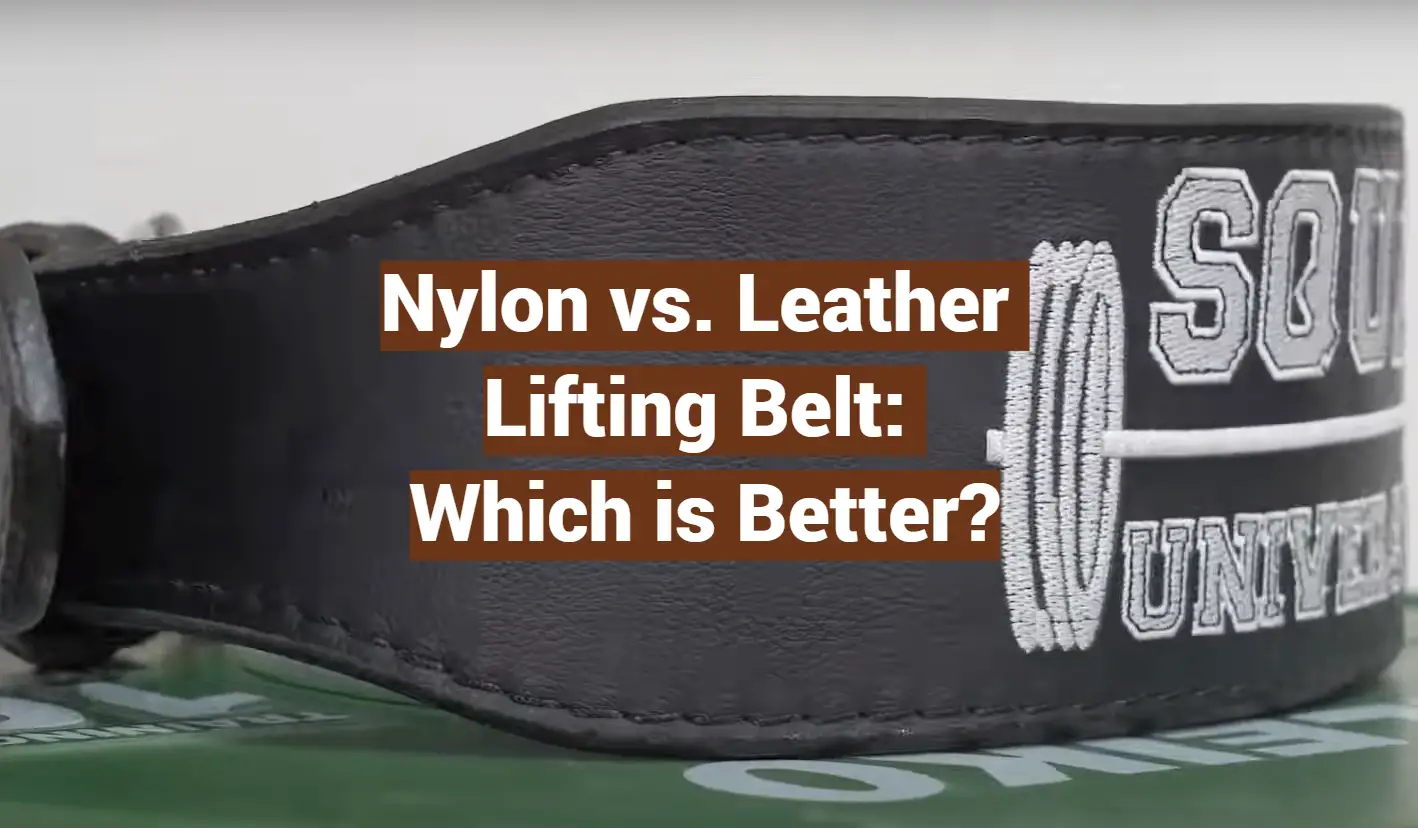
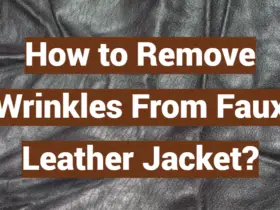




Leave a Reply